
Surely, as one would bring in a cinematographer or costume designer in pre-production, Carr noted that his job is best performed when he comes into a project early to begin the time-consuming endeavor of developing a musical concept. “Sometimes, you get the opportunity to start at a script stage when a movie is being put into production,” he said by phone, having just wrapped the upcoming Oliver Stone movie, Snowden, concerning the infamous NSA scandal. “You get to follow the thought process of the director, producer and studio to decide where the music is going to go. You end up with a different film. The earlier you can get involved, the better the solution to the music to the film.”
Conversely, Carr stated that his entrance into a film suffers with any delays of his involvement through pre-production into production and possibly postproduction. “If you are brought in later in a project, a lot of the choices that you make are going to be subject to expedience,” he revealed. “It’s got to be done in a certain period of time. You may be working in a situation where the music has been temped with music that either the film budget won’t afford and you are trying to replace, or a temp scored that needs to be copied.”
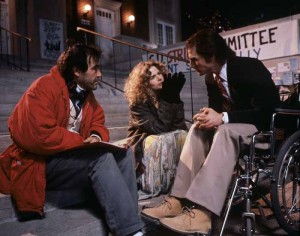
According to Carr, the key to collaborating with a director of the caliber of Stone is an open flow of conversation about the ideas behind the music, with many of Stone’s films set in the mid-to-late-20th century. “With Oliver, and he’s a voracious music listener and a big fan, we start a project together, in script stage, putting together assortments,” Carr related. “In the old days, it was a box of cassette tapes when we started doing Born on the Fourth of July. Directors who enjoy music will grab a tape, maybe not with the specificity of where it will go, but it will allow you to create a palette of where it will go. Directors will become attached with songs; they try to put them in places where it won’t work. On W, Oliver liked ‘Spirit in the Sky.’ Where to put it? It ended up in a great place. None of us would have done that. It was a commentary on the visual. He found a way to make it work. That’s the fun part of it.”
In one striking sequence during the noted Born on the Fourth of July, lead character Ron Kovic (played by Tom Cruise) has come back to his hometown of Massapequa, Long Island after serving in the Vietnam War. It’s now 1969, and Kovic’s world has transformed from the 1964 of the film’s opening scenes. For the transitional story point, Stone shot a July 4th town parade in considerable slow motion while Carr’s musical selections played to haunting effect. “Those types of moments are the perfect combination of a picture editor who loves music, a director who loves music, and the right piece of music,” Carr detailed. “I’d love to say it’s my idea, but oftimes it’s not. I do remember selecting Up, Up and Away [for the opening shot of the parade]. When I was in my 20s, I did have to book Fifth Dimension and meet those guys. Those types of visceral experiences bring people back to that time period.”
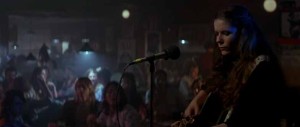
Another such fascinating music moment is when Kovic, back from war, visits his childhood girlfriend Donna, played by Kyra Sedgwick, at Syracuse University. When they enter a dining area for young people, the entertainment comes in the form of a late-1960s folk singer played by a newcomer at the time of production, 1989, Edie Brickell. “A friend of mine at the label turned me on to her,” Carr remarked. “Putting her on camera is something I had to fight for: a little moment in that movie wasn’t designed to be there, but her screen time, she earned.”
Later in the story, Kovic is suffering in his civilian life, unable to assimilate back into society. In one scene in a bar, he tries to dance, wheelchair-bound, decidedly inebriated, and having fought with another combat veteran in the establishment. The song playing becomes as definitive as the scene itself, forever linked with the scene from that moment onward: “Born on the Bayou” by Creedence Clearwater Revival. “Another song that was part of a cassette package – 12 audio cassettes that were given to Oliver and Tom prior to starting that movie,” said Carr. “It was fun to pull those albums and make tapes and give them to everybody.”
In the case of “Bayou,” Carr credited Stone with targeting the song for the specific scene. “Oliver said, ‘I think we should use that song in the bar.’” Carr recalled. “I cast a band out of Texas because we shot that thing in Dallas. We were supposed to do it in December – the producer said, ‘We are going to shoot it before Thanksgiving.’ I fly out, meet these guys, and they can’t sing the track. I literally laid in a vocal track for this guy to copy. We finished the track. The band that’s in the bar is the band that plays the track. They did a great job. It felt like a bar band. It’s a lot easier to do that if they actually sang it.”
For that scene, captured during a two-day shoot, Stone saw the band in rehearsal and came to Carr with a special request. “We went through and blocked the shot. He said, ‘Teach him ‘In A Gadda Da Vida.’’ I walked outside and looked it him and said, ‘Are you serious?’ He was joking.”
In crafting the final film, Carr worked closely with picture editor David Brenner who won an Academy Award for his efforts. “David as a picture editor is one of the best music guys I ever worked with,” said Carr. “That’s a collaborative venture. Sometimes the brilliance of the picture editor is finding how to use the material. It’s always to our benefit to have picture editors who understand music.”
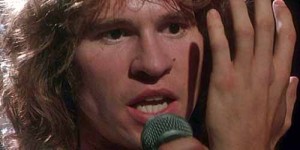
“He asked me about doing a film about Jim Morrison,” Carr recollected. “How did I think that would be perceived? On the live scenes in that movie, 85% of the vocal performances in those scenes with Val Kilmer is him singing live. In the rest of the movie, a lot of those are tracks that Val recorded. To get that role, Val did a demo tape, not only of him singing and playing, but in makeup, hair and costume. Val produced it when we were still casting that movie. He wanted that role more than anything. He did an amazing job. You have one or two experiences in your life to have an actor that committed. I had the benefit of working with Paul Rothchild and Bruce Botnick who produced the Doors albums. It’s not often that you get a chance to do it right; I think we did it right. Those are the actual Doors tracks.”
Having just finished mixing Stone’s next film, Snowden, Carr viewed a sea change from Stone’s preferred era of the 1960s to the 2010s. “There was no question that EDM music was not something you would find in Oliver’s iTunes,” Carr quipped. “Early on when we read that script, we got used to things that Ed would have been listening to in 2008 or 2011. ‘At the end of the day, I don’t understand EDM,’ Stone said. He eventually came back and really liked certain songs. The more that the director has a sense of authorship of what the music is going to do, you end up with something more than pasted on.”
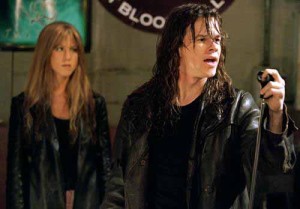
For the main band featured, Priest surrogate Steel Dragon, Carr brought in actual rockers to play the movie band: guitarist Zakk Wylde, bassist Jeff Pilson, and drummer Jason Bonham, with Mark Wahlberg as the lead singer. “Zakk is a friend of mine,” said Carr. “He showed up for his first interview with his hand wrapped with a towel full of blood. Director and producer looked at me: ‘What the fuck was that?’ He smashed his hand into a wall. Producer: ‘He’s yours, and you mind him.’ We had basic 1980s band fights in the studio. Zakk threw beer at people.”
To accurately create the movie band with the real musicians, Carr had an unorthodox request for the studio. “I said to Warner Bros., ‘I need to rehearse them for six weeks,’” he remembered. They said, ‘You’re out of your mind.’ It took us meeting with 10 people at Warner Bros. ‘If we don’t take the time to rehearse them, it’s going to cost them a fortune in postproduction.’ We set the stage up in the armory in Van Nuys and rehearsed them. Mark moved into a house in Van Nuys like he was a rock ‘n’ roll singer from the 1980s. You started building a repertoire of references in relation to the band that you are going to form. Those are the kind of things that you get a chance to do in your life. At the end of the day, I’m happy with the work.”
Even though Wahlberg was a notable hip-hop singer in his Marky Mark period, Carr enlisted singer Miljenko Matijevic to handle the Wahlberg character’s vocals. “Mark was singing along with it,” Carr described. “All of that facial exercise you take when you sing, so that you believe that Mark Wahlberg was singing. You sit back and are amazed at how convicted these guys are when they accept those challenges. Mark had been onstage, but not as a metal singer. We went to the guys who wrote the hits to write the songs for us. Prior to doing what I do now, I managed a rock band, Kansas, so I know the world.”
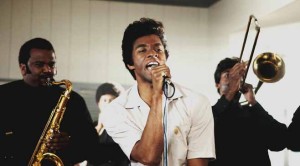
With material from Brown’s classic 1950s and 1960s period, Get On Up afforded Carr unprecedented access to original Brown recordings. “They were legendary guys,” he said of Brown’s musicians on the basic tracks, which Carr then translated into 20th century performance footage. “There’s only so much you can do with the music side of it. To have a band onstage to feel like they are playing, when you are working with music visuals, having the access makes the end product satisfying. It feels like you watching James Brown playing.”
Having honed his abilities on all types of projects, Carr professed one mandate that he hopes all collaborators aspire to follow on every new film or show. “From my standpoint, the concept of using songs for score needs to be a conscious decision that a director makes that a picture editor is going to follow,” he said. “A music supervisor is going to try to make that work. Movies are all score, and, all of a sudden, there’s a song. If you use songs as pieces of score, or to do dramatic moments, you need to do it more than once. Two kids walk out of a bar and down the street, and a love song is going; it becomes a TV moment. Sometimes, it messes with the drama.”
In hindsight, Carr noted that, ultimately, directors will typically dictate a musical concept, and, as in his work with Stone, that can often be a powerful ally in a film – if all of the principal filmmakers are on board. “Creating a dramatic environment – the composer has to figure out how to make those things work,” he concluded. “In some instances, songs don’t work. People make soundtracks out of pictures that don’t deserve soundtracks. Pay attention to it early enough. Hopefully, you have a receptive audience in the director.”





